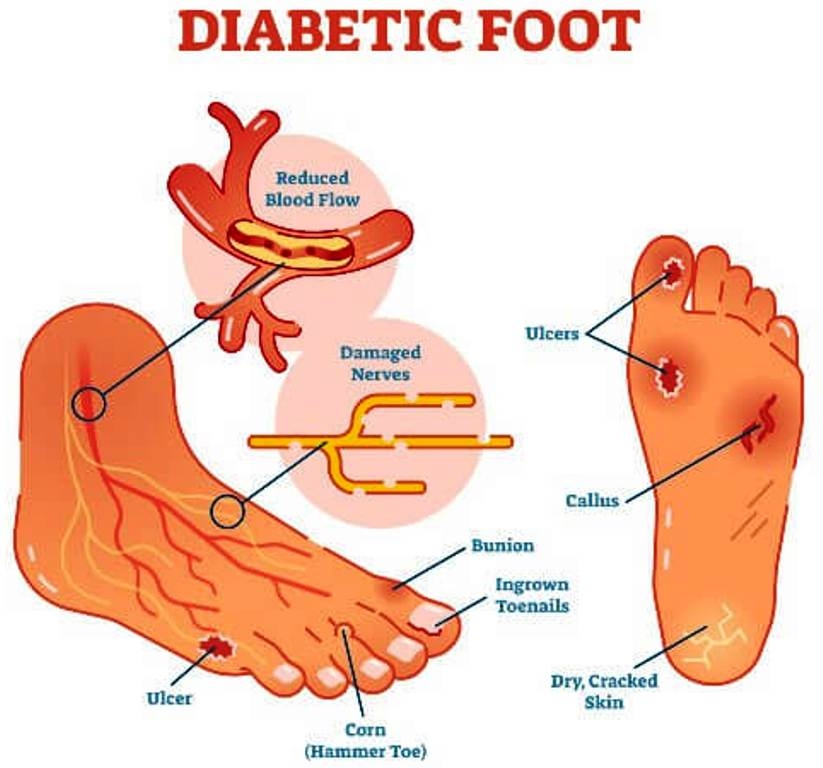
By: Dr. Chakshu Ch.
Diabetes mellitus is a major public health problem and this is often understated that more of the problems emerge in silent fashion rather than sudden emergency. The complications of diabetes that occur in a general manner are in the form of three “pathies” – Retinopathy (the eyes), Nephropathy (the kidneys), Vasculopathy (blood vessels thereby heart, brain and blood vessels in the legs) and Neuropathy which involves the nerves.
Let’s understand how the feet are involved in diabetes; as mentioned above there may be involvement of the nerves in diabetes and this in fact is the most common complication. The onset is silent initially and subtle. It may be picked up by a doctor checking for various sensations with various instruments.
Symptoms may occur only later on; this may be in form of “pins and needles” in the legs, arms or burning sensation, numbness with a loss of normal sensory perception in the feet. The nerves which supply the sweat producing glands in the skin also get involved and this leads to dryness of skin and loss or normal lubrication.
Now imagine things in the right perspective; if sensation is lost and the skin is dry, if you were to walk around barefoot, you are more likely to have injury to the soles of your feet without knowing about it.
Diabetes also affects your ability to handle germs and infections as a result of impairing the body’s immune system. So, if you develop a non healing wound under the sole of your foot and if small amount of dirt gets into it, you are more likely to develop a serious infection, which may take long time to heal, even the response to antibiotics may be slow than normal. The infection, if remains untreated or partially treated, may spread up to leg and may get into the blood stream, endangering not only the leg but also life.
Additionally in some diabetic patients, blood circulation may pose a problem to to the limbs further decreasing the ability for an ulcer to heal. If the blood circulation is extremely poor, it leads to progressive slow death of the limb leading to what is known as gangrene. This may lead to amputation i.e. surgically cut the damaged part.
This is not to scare diabetic persons but diabetic patients should know about potential problems he or she may encounter during course of a disease they have. It is also important to know as how to prevent complications before they occur, since prevention is better than cure.
One of the cardinal recommendations is to avoid walking barefoot at all times when a person has diabetes even when inside the house. This will reduce the risk of ulcerations to a great extent. If there is even early impairment in nerve function in the feet, it may be necessary to wear the footwear specially made to prevent them.
Maintaining moisture over the surface of limbs {legs and arms) is also important. Soaking the feet twice a day for 15 minutes in cool or lukewarm water is good. Drying the feet after this is important. Hot water should not be used as it may result in blister formation especially if sensations are lost.
Self examination of feet as a routine is good habit, checking in between toes and foot for fungal infection which needs treatment if detected. Cutting toenails is also important, special care must be taken not to cut the toenails too close to skin as it may lead to injury. If corn, callosities develops on the under surface of the feet, it is better to be seen by a diabetes specialist or surgeon or dermatologist. Self treatment is not good.
Let me conclude for today with an important message that proper foot care is an important part of good diabetes management.
[The author is a MD (General Medicine), Postgraduate Course in Advanced Diabetes (Harvard Medical School), Consultant Physician, Shija Hospitals]



